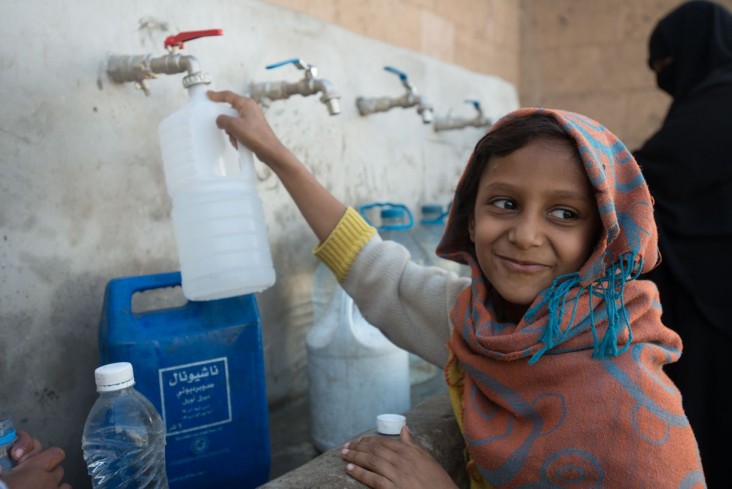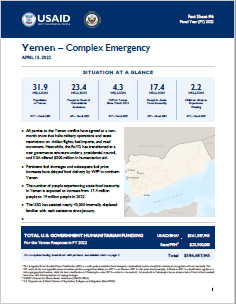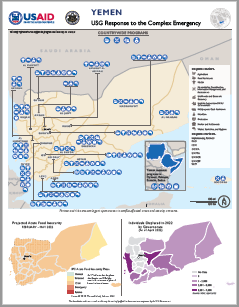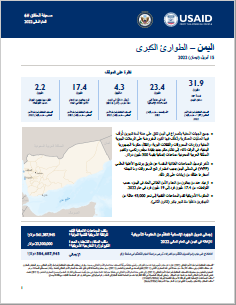- What We Do
- A New Roadmap to Health and a TB Diagnostic Test Help Improve Health Outcomes
- Agriculture and Food Security
- Anti-Corruption
- Climate Change
- Democracy, Human Rights, and Governance
- Economic Growth and Trade
- Education
- Environment, Energy, and Infrastructure
- Explore USAID’s New Storytelling Hub – Extreme Possibilities
- Gender Equality and Women's Empowerment
- Global Health
- Humanitarian Assistance
- Innovation, Technology, and Research
- Legal and Policy Requirements
- Nutrition
- Social and Behavior Change
- The Demographic and Health Surveys Program
- Water and Sanitation
- Working in Crises and Conflict
Speeches Shim

Latest Yemen Fact Sheet
Key Developments
All parties to the Yemen conflict have agreed to a two-month truce that halts military operations and eases restrictions on civilian flights, fuel imports, and road movement. Meanwhile, the Republic of Yemen government has transitioned to a new governance structure under a presidential council, and the Kingdom of Saudi Arabia offered $300 million in humanitarian aid.
Persistent fuel shortages and subsequent fuel price increases have delayed food delivery by USAID partner WFP in northern Yemen.
The number of people experiencing acute food insecurity in Yemen is expected to increase from 17.4 million people to 19 million people in 2022.
The United States has assisted nearly 43,000 internally displaced families with cash assistance since January.
Background
Between 2004 and early 2015, conflict between the Republic of Yemen Government (RoYG) and Al Houthi opposition forces in the north and between Al Qaeda-affiliated groups and RoYG forces in the south, forced people in northern Yemen to repeatedly flee their homes, resulting in the need for humanitarian aid. At the same time, fighting between RoYG forces and tribal and militant groups since 2011 limited the capacity of the RoYG to provide basic services, and humanitarian needs increased among impoverished populations. In late March 2015, a coalition led by the Kingdom of Saudi Arabia began airstrikes on Al Houthi and allied forces to halt their southward expansion. The ongoing conflict has damaged public infrastructure, interrupted essential services, displaced populations, and reduced the level of commercial imports to a fraction of the levels required to sustain the Yemeni population. The country relies on imports for 90 percent of its grain and other food sources. The escalated conflict, coupled with protracted political instability, the resulting economic crisis, rising fuel and food prices, and high unemployment, has left nearly 19 million people in need of humanitarian aid, and has put more than 17 million people at risk of starvation.
Last updated: April 22, 2022




Comment
Make a general inquiry or suggest an improvement.